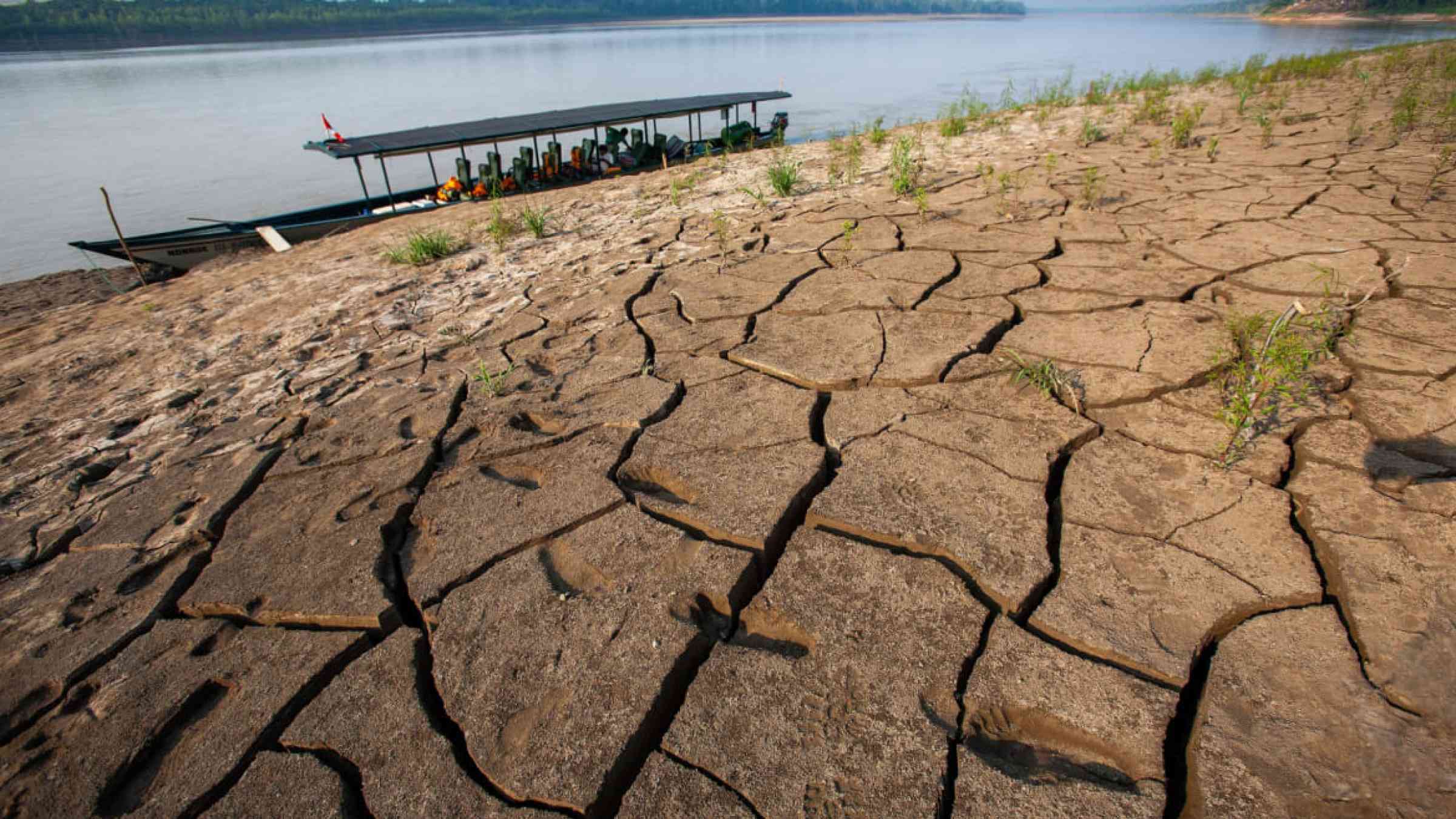Almost a year in, drought in the Amazon is far from over

The drought striking the Amazon that has worried researchers since last year is far from over, according to meteorological institutions in Brazil.
In the state of Amazonas alone, local authorities report that the drought has affected more than 600,000 people.
Even seasoned scientists are surprised by the scope. For example, “we don’t remember hearing about the death of river dolphins in past droughts in the Amazon,” said climatologist José Marengo, the research and development coordinator of Brazil’s National Center for Monitoring and Warning of Natural Disasters. Marengo was referring to the deaths of more than 250 river dolphins recorded between September and October 2023 in Lake Coari and Lake Tefé in northern Amazonas. In Tefé, water temperatures reached 39.1°C (102.3℉).
In a technical note released at the end of January, Brazil’s National Institute for Space Research and National Institute of Meteorology and the Cearense Foundation for Meteorology and Water Resources said that a pattern of lower-than-expected rainfall will extend throughout April. The pattern is, in part, a result of unusually high temperatures in both the equatorial Pacific and tropical Atlantic oceans.
As a sign of that pattern, only three of the Amazon’s 32 river basins entered February with positive rainfall volume, according to the National Institute for Amazonian Research (INPA). Another five basins had precipitation levels close to those expected for the period, but the rest—including portions of the Amazon River itself, the most extensive drainage system in the world—have started the year with low rainfall. The Negro River, one of the most important corridors for navigating the region, received about half the expected rainfall for January.
“The Amazon tipping point is a plausible hypothesis, and before a catastrophe of this nature hits, aquatic ecosystems ring the alarm.”
Researchers are currently working on an analysis of water loss in the Brazilian Amazon in 2023 compared with 2022. According to their data, in 2023 the rainforest lost 3.33 million hectares of surface water, an area slightly larger than the U.S. state of Maryland. The team is using Sentinel satellite imagery, and their analysis shows that most surface water loss in 2023 took place less than 50 kilometers away from Indigenous villages and urban areas and within 25 kilometers of small towns.
“It is crucial to monitor aquatic environments because they are the first to be affected by dry spells,” said Carlos Souza, a coauthor and remote sensing researcher at the Amazon Institute of People and the Environment.
The Amazon tipping point, he said, is a hypothetical situation in which forest degradation reaches a point of no return and the area degrades to a grassy savanna. Researchers say it may be reached if 20%–25% of the forest’s original area is deforested.
The phenomenon, Souza warned, “is a plausible hypothesis, and before a catastrophe of this nature hits, aquatic ecosystems ring the alarm.”
Floodplains are also especially vulnerable to prolonged droughts, according to Souza.
“When the soil undergoes long dry periods, it loses its microbiodiversity—which is important to process organic matter and release nutrients that contribute to soil productivity,” he said.
Finally, agricultural businesses have been hard-hit by the Amazon drought. It has affected the quality and quantity of açaí production, for example, as well as pineapples and other crops.
El Niño and Climate Change
The El Niño–Southern Oscillation (ENSO) is a predictable weather pattern that regularly brings warmer sea surface temperatures to the west coast of South America. The problem with ENSO in 2023, explained Marengo, is that the phenomenon arrived early and followed a warming of the tropical Atlantic Ocean on the east coast of the continent. Both warming processes swirled simultaneously, feeding each other.
“The peak [of ENSO] that we would expect for January this year occurred last September—very much driven by an atypically warm Atlantic Ocean,” Marengo said.
The patterns of these ocean-atmosphere processes are shifting—and shifting fast because of climate change.
In fact, a recent study released by World Weather Attribution points to climate change, not ENSO, as the main culprit for the current drought in the Amazon. In the study, an international team of 18 researchers used models to simulate the drought under current atmospheric conditions and under preindustrial average global temperatures.
In their modeling, the team found that a drought caused by low rainfall (meteorological drought) became 10 times more likely under current conditions because of climate change, whereas a drought caused by evapotranspiration (agricultural drought) became 30 times more likely to happen because of climate change.
“Droughts are not only about lack of precipitation. It is low rainfall plus evapotranspiration,” said coauthor Regina Rodrigues, a physical oceanographer at the Federal University of Santa Catarina. “Evapotranspiration depends a lot on atmospheric temperatures—and this is where climate change is more visible,” she added.
Indicator of More Extreme Events
When the drought is over, the Amazon will need time to recover, researchers warn.
“We are messing with something we should never disturb: the distribution of energy on our planet. We don’t know what consequences it can have.”
“The fact that the El Niño is set to last until April does not mean rainfall is going back to normal in May,” said Renato Senna, a meteorologist who monitors Amazon basin hydrology at INPA’s Coordination for Environmental Dynamics. Temperatures take time to change, he explained, because of a delay in ocean-atmosphere processes. “Normally, [temperature change] processes start in the oceans and spread through the atmosphere, so atmospheric perturbations take a bit longer—a few weeks—to start and end than the oceanic ones,” he said.
To Senna, the severity and extension of the current drought in the Amazon are just the tip of the iceberg for more extreme events to come.
“We are messing with something we should never disturb: the distribution of energy on our planet. We don’t know what consequences it can have.”